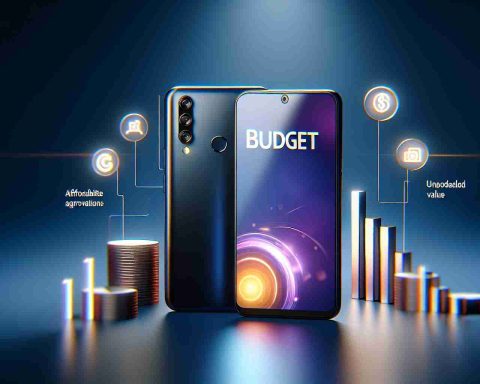Less than 10 years ago, in November 2014, Michael Porter (one of the most influential management thinkers in the world and a professor at Harvard Business School) and Jim Heppelman (former CEO of PTC) published a widely recognized article in the Harvard Business Review titled “How Smart, Connected Products Are Transforming Competition.” In it, they argued that Internet of Things (IoT) connected products would change traditional industry structures, business models, and the nature of competition in many industries.
Although the change was not as rapid as expected, over 16 billion active IoT devices exist worldwide as of 2023, including consumer devices (such as smart homes and watches) and industrial equipment (such as connected machinery in factories, electrical devices, and commercial vehicles). Most major hardware manufacturers have plans to introduce Internet-connected products along with software and servitization strategies.
In 2014, when the article was published, many equipment manufacturers, according to IoT Analytics research, were asking themselves: “Should I also produce IoT products?” Since then, the situation has dramatically changed; now, in 2024, the questions manufacturers ask are: “How should I create my next intelligent Internet-connected products?” and related to that, “What should the business model look like?”
Prominent examples of equipment manufacturers who have revolutionized their business models and scaled to hundreds of thousands and even millions of connected devices at this stage include:
1. BMW, with over 20 million connected vehicles on the roads worldwide.
2. John Deere, with over 500,000 connected agricultural and construction machines in the field.
3. Schindler, with over 500,000 connected elevators worldwide.
Even smaller equipment manufacturers achieve impressive results with their connected devices. Consider UNOX, an Italian manufacturer of professional kitchen equipment with around 1,200 employees. UNOX started its connected product concept phase in 2015 and has connected over 30,000 ovens since then, introducing new sources of revenue.
There are thousands of other examples of smart IoT product business models that scale to such a number of connected devices, and the resulting business implications should not be underestimated—often they are crucial to a company’s strategy. Take, for example, the American machinery giant Caterpillar, which has set a goal of achieving $28 billion in service revenue by 2026. Data from smart, connected trucks, excavators, and wheel loaders play a key role in achieving this target.
“My confidence in achieving our $28 billion target for service revenue by 2026 increases. With tools like new Cat® Central and SIS2GO applications and insights into the data from our over 1.4 million connected assets, we are building a unique customer experience, helping them minimize downtime, improve utilization, and extend product life.” – Jim Umpleby, Chairman and CEO at Caterpillar (2022).
In our research for the “IoT Commercialization & Business Model Adoption Report 2024” (published in February 2024 and consisting of 206 pages), we analyzed 100 equipment manufacturers, such as Caterpillar, to understand: What are the findings and best practices these companies have developed as they scale their connected products to thousands or millions?
The data is based on survey research with participants from these companies who have knowledge and insights into their company’s IoT business model.
Components of a Successful IoT Implementation
There are many trade-offs when introducing intelligent connected products to the market, such as:
1. What features should we focus on?
2. Should we monetize the hardware, software, services, or data? Or perhaps a combination of these elements?
3. Should we charge a one-time fee, a monthly fee, or even usage-based payments?
4. Should we offer some features for free?
5. Should we use technology provided by an external supplier, develop it internally, or utilize open-source software solutions?
The report provides answers and perspectives on each of these trade-offs and indicates which IoT business models are considered more successful. This article does not delve as deeply as the report but highlights 8 conclusions that were discovered during the analysis.
We divided our analysis of IoT business models into 4 parts:
1. Justification for connected devices (e.g., defining the revenue contribution, presenting key benefits, and identifying major beneficiaries of connected devices).
2. IoT product development (e.g., budgeting, component sourcing, time to market, and feature development).
3. Common questions about IoT devices:
– What are the benefits of introducing IoT connected devices to my business?
– Which features should I focus on developing?
– How to monetize hardware, software, services, or data related to IoT products?
– Which payment model should be chosen – one-time, monthly, or usage-based fees?
– Should I offer some features for free?
– Should I rely on technology provided by external suppliers, develop it internally, or use open-source software?
– What are the key components of a successful IoT product implementation?
– What are the best practices and insights from other companies in scaling IoT products?
Key Term Definitions:
1. IoT (Internet of Things): The connection of physical devices, such as consumer electronics, vehicles, and industrial machinery, to the internet, enabling them to exchange data and communicate.
2. Internet-connected hardware: Physical devices, such as household appliances, industrial machinery, and vehicles, that have the capability to connect to the internet and transmit data.
3. Business model: A plan and strategy that determines how a company generates revenue and achieves profits.
4. Servitization: A business model in which a company offers its products as subscription-based services instead of selling them as one-time purchases.
Related Links:
1. Harvard Business Review
2. IoT Analytics
3. BMW
4. John Deere
5. Schindler
6. UNOX
7. Caterpillar
[Embedded Video: https://www.youtube.com/embed/0YfVw5ypWuY]
The source of the article is from the blog maltemoney.com.br








